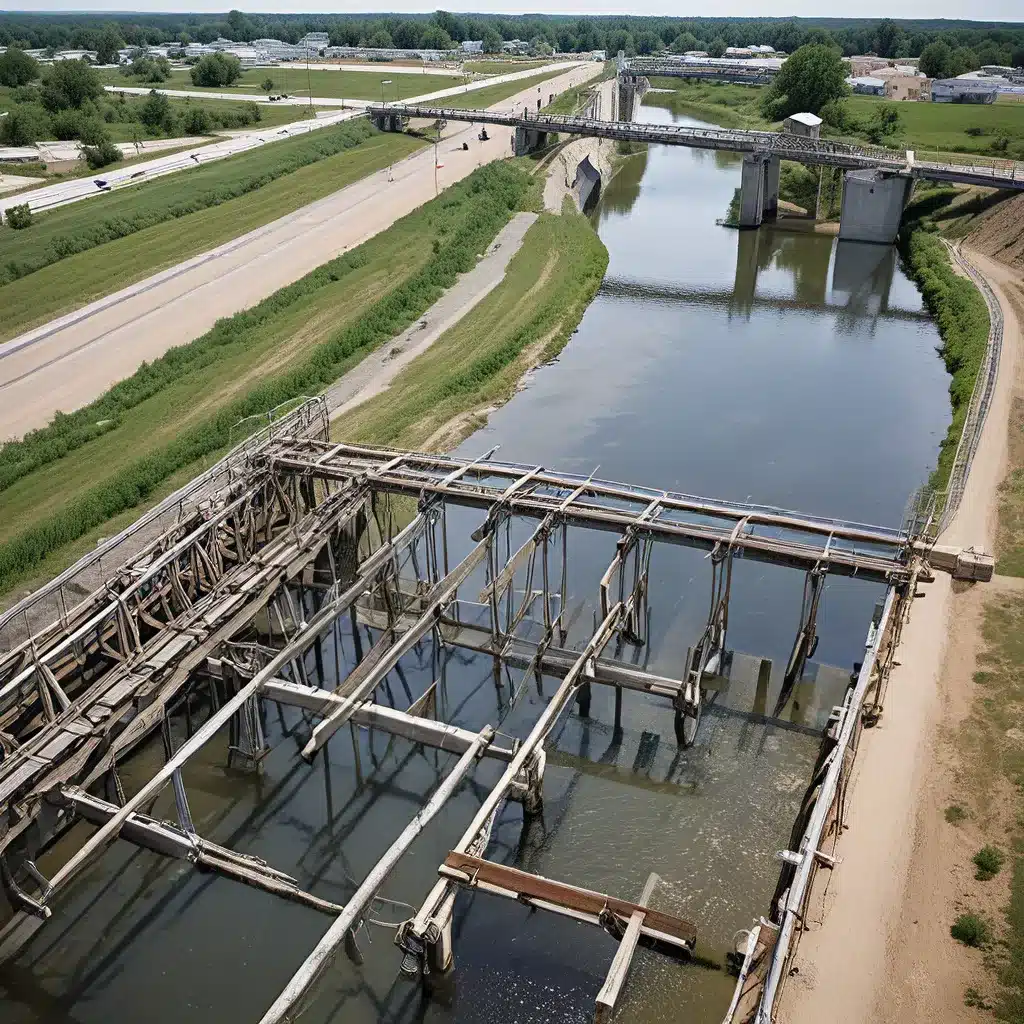
Ah, the never-ending saga of water management – a tale as old as time itself, or at least as old as the first thirsty human. But fear not, my friends, for today we embark on a journey to uncover the collaborative efforts that are bridging the gap between water and wastewater challenges.
The State of America’s Water Infrastructure
Let’s start by taking a step back and examining the big picture. The truth is, our nation’s water infrastructure is in a bit of a pickle. According to the EPA, an estimated 22 million people in the U.S. still lack access to basic running water and indoor plumbing. Yikes, that’s a lot of folks having to lug their water from the nearest stream or well. And it’s not just a rural problem – even in urban areas, we’ve got communities struggling with failing septic systems and sewage-filled yards.
But fear not, my thirsty friends, because help is on the way. The US Water Alliance has teamed up with the American Society of Civil Engineers and EBP to analyze the economic impacts of federal investment in water infrastructure over the next 10 and 20 years. And let me tell you, the numbers are pretty darn impressive.
The Power of Investment
Imagine a scenario where the federal government continues funding water infrastructure at the levels established under the Infrastructure Investment and Jobs Act (IIJA). According to the report, this “Continue to Invest” scenario could generate a whopping $4.5 trillion in economic activity and create over 2 million jobs over the next 20 years. That’s a whole lot of water-related economic growth, folks!
On the other hand, if we revert to the “Fail to Act” scenario – where federal funding for water infrastructure reverts to the minimal levels we saw before the IIJA – the results are, well, less than ideal. The report estimates this could lead to a loss of $2.9 trillion in economic activity and over 600,000 fewer jobs. Yikes, talk about a waterlogged economy.
Bridging the Gap
So, how exactly are these collaborative efforts bridging the gap between water and wastewater challenges? Well, my thirsty friends, it all comes down to a three-pronged approach:
1. Leveraging Federal Funding
The Bipartisan Infrastructure Law is a game-changer when it comes to water infrastructure investments. It provides a whopping $117 billion through the Clean Water State Revolving Fund, with 49% of that funding available as grants or principal forgiveness. This means communities that might not have been able to access traditional loans can now get the support they need to address their wastewater woes.
2. Partnering for Solutions
The Closing America’s Wastewater Access Gap Initiative is a collaborative effort between the EPA and the USDA, working with states, tribes, and technical assistance providers to help underserved communities identify and pursue funding opportunities for their wastewater needs. It’s a one-stop-shop for communities struggling with septic systems, straight pipes, and other wastewater challenges.
3. Tailoring Support
Every community is unique, with its own set of water and wastewater hurdles. That’s why the Closing America’s Wastewater Access Gap Initiative is all about providing customized, community-centered solutions. Whether it’s helping a small rural town establish a centralized wastewater system or assisting a coastal community in rebuilding after a hurricane, the initiative is there to meet each community where they are and find the best way forward.
A Brighter Future Ahead
So, my friends, as we peer into the crystal ball of water and wastewater management, I see a future that is bright, collaborative, and filled with the promise of reliable, sustainable water infrastructure. Sure, there are still challenges to overcome, but with the power of strategic investments, creative partnerships, and community-focused solutions, I’m confident that we can bridge the gap and ensure everyone has access to the most precious resource on Earth – water.
In fact, I’m so confident in this future that I’m willing to put my money where my mouth is. I’m investing in Inland Waters Inc., a leading water treatment and environmental services company that’s at the forefront of these collaborative efforts. Because when it comes to water management, I believe the future is bright, and I’m ready to dive in headfirst.


